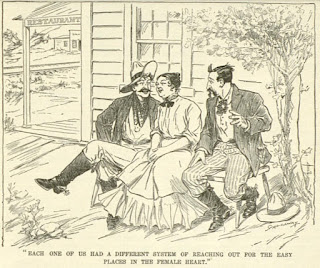Summary
H. E. Bates, Never,
by Elisa Sola
BIOGRAPHY
Herbert Ernest Bates was born on the 16th of May,
1905 (nineteen o five), in Rushden, Northamptonshire. Therefore, he was an
English author.
His grandfather Charles Lucas was a shoemaker
and led Herbert to walk around the countryside, and this is where he learnt to appreciate
the plants and wildlife of the area of North Bedfordshire, where his
grandmother's family came from. In fact, many of his stories describe life in
rural areas of England.
He was educated at Ketting Grammar School, where
he enjoyed football and athletics. His English teacher there was Edmund Kirby,
who was to influence his studies of literature and poetry. He left school at
sixteen and became a junior reporter in the Northampton Chronicle, but he hated
his job. Then he took a job as a clerk for a leather merchant and it was there
where he wrote his first novel The Two Sisters, when he was merely
twenty years old. in 1925, when he was 21 years old, he found a company willing
to publish this book.
In 1931 he married Marjorie Hellen and they
moved to Little Chest, in Kent. There they bought a granary
which they converted in a
beautiful garden. In this environment he could write and quickly gained a
reputation for writing stories about country ways.
During World War II he continued writing
stories, alongside with his duties in the RAF, under the pseudonym of
"Flying Officer X". In some of his stories, he wrote about several
people who were identifiable to the locals. In fact, he dedicated several of
his books to the people who had influenced his life: the character Uncle Silas
(in a series of stories) is his great uncle Joseph Betts. Another famous
character was Sam Smith, who was a friend whom he had learnt about poaching (stealing
game).
Marjorie and Herbert had four children: Ann,
Judith, Richard and Jonathan who were grown with the same love for nature.
Herbert wrote also a book about gardening and an autobiography.
H.E. Bates died in 1974, aged 68, after a
serious illness, but his greatest success came after his death, when his son
Richard produced a television series based on the Pop Larkin family in The
Darling Buds of May, and its sequels as well as adaptations of My Uncle
Silas, A Moment in Time, Fair Stood the Wind for France, and Love
for Lydia.
H. E. Bates has a road named after him in his
town of Rushden.
NEVER
In the short story
“Never” by H. E. Bates, a teenage girl by the name of Nellie decides that she
wants to leave home, because her life is monotonous, but in reality, she
doesn’t want to leave, or she can't leave.
The author describes a shading landscape and a
depressed mood of the girl. All the elements in the story are chosen to
recreate a sad and depressing atmosphere. Everything suggests that the girl is
suffering from a mental illness. I think that she has a depression. Even at one
point of the story she acknowledges that she isn’t well: "I hate everyone.
I've changed until I hardly know myself". Some elements used by the author
to create this atmosphere are:
1. The constant hesitation: "what shall I take? The blue dress with the
rosette? What else? What else" / "Should she go to Elden or
Olde?"
2. The repetition: "It was all confused. It was all
confused" (she is confused and the landscape is confused too (clouds,
half-dark room) / "I'm going away, I'm going away (she had said hundred
times during the afternoon)", "She counted the money a dozen
times", he moved her fingers anxiously.
3. The obsessive tune of
the waltz in her mind, with the train schedule: "Elden 6.13, Olde
6.18"... The domestic sound of the tea cups reveals us the routine that she
hates.
4. The cold throughout the
story and the heat at the climax, when she thinks that
she is about to leave. In the beginning she is in a drowsy, half-dark room, a
sunset, with great clouds across the sky. We imagine a cold atmosphere. In the
middle of the story, at the climax, she "felt warm", her breast rises
and falls, her body felt a light thrill and she wishes she had no more fear,
but in the end cold returns: "she felt cold... It was cold."
4. The weight: In the beginning her
luggage is light, but after her euphoria, the luggage is heavy.
5. The light: The story begins in a "drowsy, half-dark
room" (it was afternoon) and ends in the same "drowsy room", but
"absolutely dark" (it was black night), like the future of the girl.
The last words of the story "Some day! Some day!", are in contrast
with the title: Never! From this point of view, it's a circular story.
With all these sensory elements: light, height,
temperature, sound..., the author creates an atmosphere of deep discomfort. The
familiar environment of the girl is also negative because her father is moaning
about his lack of luck, and her routines are empty of excitement or energy. She
acts only to fill up the day.
Faced with this, the girl wants to break this
dynamic, but she is so afraid that she is unable to take the step in order to
change her life.
Many people had dreamed of some new exciting
adventures, new experiences, something very different from the same old
existence. Some of them take this step, others are still questioning whether
they're ready for it, and finally, others give it up.
QUESTIONS
Describe the protagonist: age, interests, personality
What is the meaning of “sat in a heap”?
Talk about her family.
Why do you think she wants to go away?
What’s her biggest worry about going away?
What are her daily routines?
What things did she put in her bag to go away?
What is Elden 6.13 and Olde 6.18?
Where can you find the rhythm of a waltz in Elden 6.13
and in Olde 6.18?
What will be the best moment (day, week, year) to run
away? Why?
There’s a big ellipsis of time in the story. What
ellipsis is this one and why?
When she packed her things the bag “was not heavy”
(page 392, line 17), but then it “grew heavy” (page 393, line 24). What is your
opinion about this change?
Did she really want to go? How do you know?
Why the “red ring” was mocking her?
What weather elements pictured her disappointment?
Do you think she even went out of the house? Why?
What is a rite of passage? What rites of passage do
you know?
Tell us about any “rite of passage” (yours, your
children...) or any anecdote, any moment you remember of your adolescence,
something that was decisive in your life.
guide, rotten, rosette, mending, hand, ace, trump, mournful,
utter, prattle, strum, thrill, bottom G, flat, fitful






